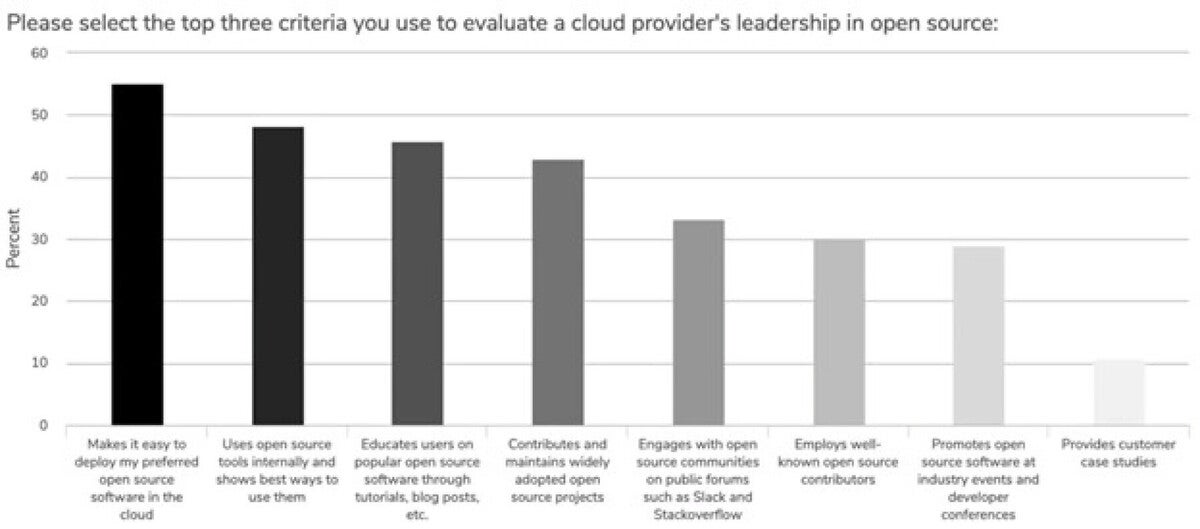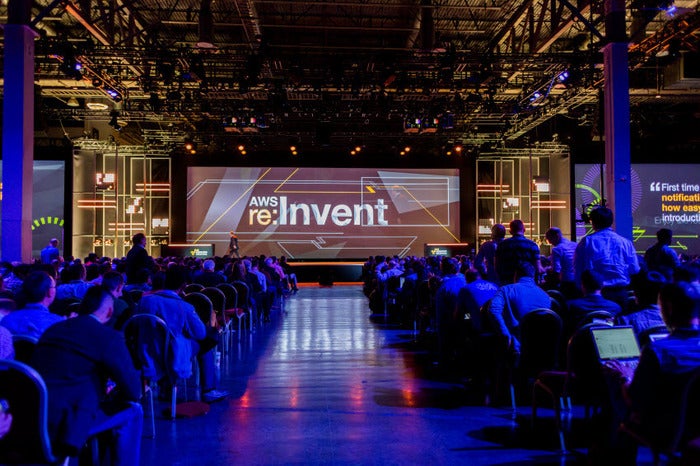Pity the tech company that tries to put out news this week, particularly on Tuesday, when AWS re:Invent kicks off. Trying to compete with AWS during its big conference is absolutely futile given the barrage of launches and updates the cloud giant will make. It’s hardly even worth predicting what AWS will announce, as I’ve tried to do in the past. The reason? AWS does so much in so many different categories that trying to find a unifying theme can be as daunting as it is futile.
But here’s something you can bet on: Someone somewhere is going to be infuriated by an AWS announcement. In the AWS quest for customer obsession (Leadership Principle #1), it tends to overlook leaving offerings for the local deities of open source, multicloud, and even serverless. Yes, sometimes AWS could (and, really, should) do more in these categories in pursuit of customer obsession, but perhaps not so much as its detractors might suggest.
You keep using that word…
Let’s start with serverless. Jeremy Daly, CEO of Ampt and an AWS Serverless Hero (and former general manager of Serverless Cloud at Serverless, Inc.), knows a thing or two about serverless. So, when he takes AWS to task for misnaming things as “serverless,” it’s worth paying attention.
He reminds us that originally, “AWS … pitched the four main benefits of serverless as (1) no server management, (2) flexible scaling, (3) high availability, and (4) no idle capacity.” That last factor was critical, even essential, because it meant that customers wouldn’t get charged unless their app was running (i.e., no servers were running behind the scenes, clocking cycles the customer would pay for). Just a year later, however, AWS had scrapped the “no idle capacity” criterion for defining serverless.
By re:Invent 2018, AWS introduced a new, kind-of-sort-of “no idle capacity” criterion called “pay for value,” which meant “pay for consistent throughput or execution duration rather than by server unit.” Even this doesn’t quite hold up because, as Daly calls out, AWS Neptune “serverless” still costs $290 per month minimum, even when scaled down to its lowest capacity. Serverless? Not really. “Somewhere along the way, our [serverless] compass broke,” Daly laments, “and we’ve strayed quite a ways off the path to the promised land.”
He’s correct, but the follow-up question is: Do customers care?
I’m pretty sure the answer is no. I suspect, if pressed, most customers wouldn’t understand the concern with fidelity to what has really been a marketing term from the beginning. We might wish that customers would demand strict adherence to some lofty ideal, but in my experience, customers are mostly concerned with whether a product helps them do something faster, better, or cheaper. If the product they’re buying also ticks a serverless definition box created by the smart folks on Twitter, bonus points.
Open enough, multicloud enough
Back when I worked at AWS, my team sponsored a blind survey to better understand what customers wanted their cloud vendors to do relative to open source. In response, customers displayed a level of pragmatism that tends to get lost in our industry’s open source debates.
 Chart courtesy of AWS
Chart courtesy of AWS
AWS’ customer survey shows a clear preference for convenience in using open source.
What did customers want? They wanted help running open source. Contributions matter because they help a vendor build and support better products, but the number 1 response is (and I’d argue, always will be) “make running open source easy for me.” Convenience nearly always wins.
Again, there are good reasons for AWS (and others) to contribute more to open source projects, but that chart is a strong clue as to why we likely won’t hear AWS parading its open source bona fides from the re:Invent main stage. There is plenty to parade, were the company so inclined. Just last week it announced Finch, a command line client for Linux containers. AWS employees continue to contribute to projects like OpenTelemetry, Kubernetes, and Linux while AWS sponsors its own projects such as OpenSearch, Bottlerocket, Firecracker, and more. “Open source” can be almost jingoistic in how some treat it, but AWS will be “open enough” to first focus on customer needs.
In a similar manner, I highly doubt we’ll hear “multicloud” from AWS CEO Adam Selipsky’s lips during his keynote, even though the company has not-so-quietly released services like EKS Anywhere that can be run, well, anywhere. Does “anywhere” include other clouds? Yes, of course it does.
AWS has finally come around to hybrid cloud, but it took a long time getting there. Importantly, it only added “hybrid” to its lexicon once it had figured out a strong, customer-centric reason to do so. To date, the company is still allergic to multicloud because, as Selipsky stressed at last year’s re:Invent, the company still believes customers benefit from concentrating investments in one place. Could that change? Perhaps, but you won’t read a single mention of multicloud in Selipsky’s recent interview with John Furrier. I wouldn’t hold my breath to hear it from the re:Invent main stage, either.
All of this is a reminder that although we as an industry may set up certain words and phrases as tokens of enlightenment, AWS still treats customer obsession as its North Star. This isn’t to suggest that open source and serverless don’t matter to AWS—they do. But, rather, it’s the way AWS includes them in its product offerings that may not satisfy everyone.






